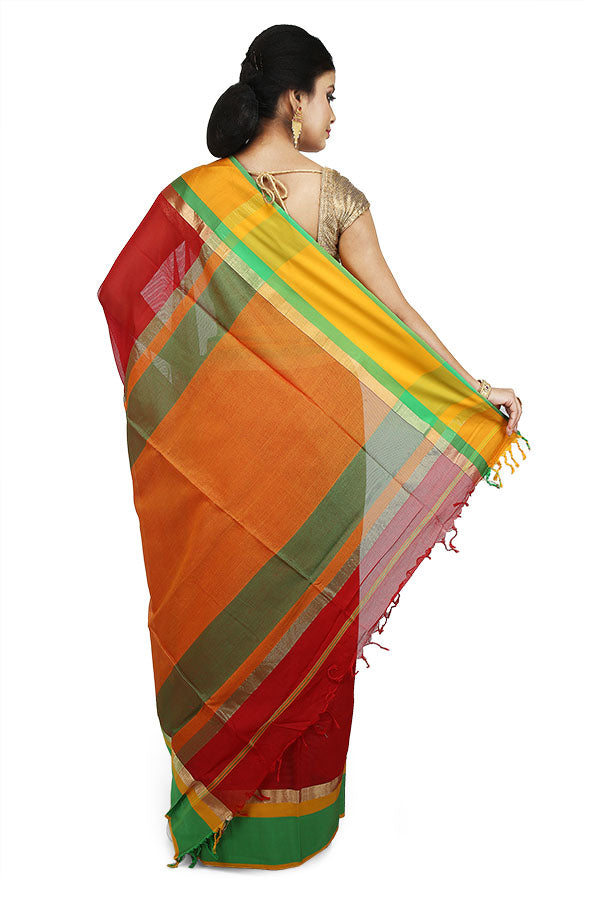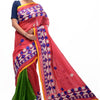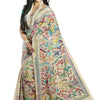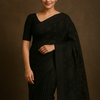Exploring the History and Significance of Muslin Sarees

Muslin is not only a word; it's a sentiment of art and imagination. It defines the glorious and golden past of Bengal. For centuries, muslin saree has been an integral part of Bengal’s textile industry. During the Mughal era, Dhaka, the capital of Bengal, produced exceedingly exquisite fabric. It was referred to as "Muslin" around the world. The Mughal Empire's rulers loved this exquisite apparel. Soon, muslin has become the favorite fabric among the aristocrats of Indian society. After satisfying the subcontinent's demand, the finest cloth was even exported to Europe. According to legends, muslin that was forty cubits long and two cubits wide could be readily placed through a basic ring. This is because the finest muslin material was very fragile. Even a muslin cloth that is 50 meters long can fit inside a matchbox. Unfortunately, Muslin has vanished from Bengal due to the passage of time.
But there is a famous saying “a diamond is forever”. The same applies to the muslin saree whose delicate texture and exquisite elegance stayed in the hearts of Bengali sarees lovers. As a result, the Bangladesh government took initiative to save this art form and this finest cotton fabric got back its glory after 160 years. With their timeless beauty, today's muslin sarees have captivated the hearts of people all over the world. So, let’s delve into a deep exploration and find out some amazing facts about the glorious muslin saree history and its significance.
Recommended: The History Of Katha Embroidery: From Ancient India To Modern Times
Origin And History Of Muslin Sarees
India has long been renowned around the world for its textiles. Muslin is one such well-known textile that was mostly produced in Bengal and Orissa. The highest-quality muslin, nevertheless, was made in Dhaka.
Although, the exact date of muslin production in India is unknown. In the third century BC, the Greek ambassador Megasthenes was appointed to the court of Chandragupta, the ruler of the Mauryan Empire. One of his writings describes a kind of fabric that resembles current muslin remarkably.
Arab traders introduced a variety of fabrics, including muslin, to Ethiopia and Egypt in the first century AD. From there, muslin expanded throughout European countries, including the Roman Empire. At first, it was believed that Muslin took its name from the modern-day Iraqi city of Mosul. However, modern historians believe that the name Muslin was taken from the Roman name Maisolos. It was the roman name for the port of Machilipatnam in Andhra Pradesh, India. One of the principal exports from the Port of Maisolos was muslin.
In Bengal, muslin has a long history that dates back to the third century BC. Bengal was renowned for producing high-quality cotton, and the fabric was prized for its exquisite softness. The craft of muslin weaving was passed down from one generation to the next, and eventually, it was ingrained in Bengali culture. Muslin was the most beloved fabric of the Mughals, and the nobles in Mughal courts adopted it as a status symbol. Muslin was so highly valued, that it was even used as money. However, the demise of the muslin industry started in the 18th century. It is the time when British colonialism disturbed traditional weaving techniques. Thankfully, Bangladesh government has made serious efforts to revive this traditional weaving art.
See More: Take Care of Your Handloom Sarees and Keep them Looking Fresh!
Cultural Significance of Muslin Sarees
In India, particularly in Bengal, the place of their origin, muslin sarees have a significant cultural value. These sarees are more than just a piece of clothing; they also serve as symbols of the region's rich cultural past. When worn at formal events like weddings and festivals, muslin sarees can make its wearer look most elegant and sophisticated. Muslin sarees' elaborate weaving patterns are a reflection of the wonderful craftsmanship. Muslin sarees also define symbolism, with certain hues and design elements that carry a specific meaning. For example, red is considered auspicious and is often worn during weddings. While the paisley pattern symbolizes fertility and abundance.
Unleash Your Inner Fashionista With Our Muslin Sarees!
Are you looking for the most exquisite and genuine muslin sarees online? End your search with Banglarsare! Each muslin saree in our collection has been wisely chosen to guarantee high-quality fabric that oozes class and charm. Our muslin sarees are exquisitely crafted with intricate designs that will make you feel like a queen. Our Bengali sarees collection includes something for everyone. So why wait? Browse our selection today and buy the most gorgeous and authentic muslin sarees from us!
Frequently Asked Questions –
What Are Muslin Sarees?
Muslin sarees are light-weighted and sheer cotton fabric that is known for their fine texture and elegant designs.
What Is The Origin Of Muslin Saree?
Muslin saree originated in the areas of Dhaka and Sonargaon in Bangladesh.
Why Is Muslin Saree Famous?
Muslin sarees are loved by women all over the world for their lightweight texture, delicate drape, and intricate design.
What Is The History Of Muslin In Bengal?
Bengal was once famous for producing fine muslin textiles, which were highly valued for their exquisite craftsmanship and quality.
Where Is Muslin Saree Made?
Muslin sarees are mainly made in Bengal and Orissa states in India.
How Are Muslin Sarees Made?
Muslin sarees are made by weaving cotton yarns together using a loom. The weaving process of muslin saree is very intricate and requires a great deal of skill.
What Are The Different Types Of Muslin Sarees?
Muslin Jamdani saree, Muslin cotton saree, and dhakai muslin are some popular types of muslin sarees available in the market.
How Do You Care For Muslin Sarees?
You should hand wash a muslin saree using mild detergent and cool water to keep its lustrous shine alive for years.
Can Muslin Sarees Be Worn On Special Occasions?
Yes, you can wear a muslin saree at any event starting from a wedding to a casual gathering and festivals.






